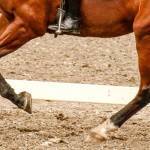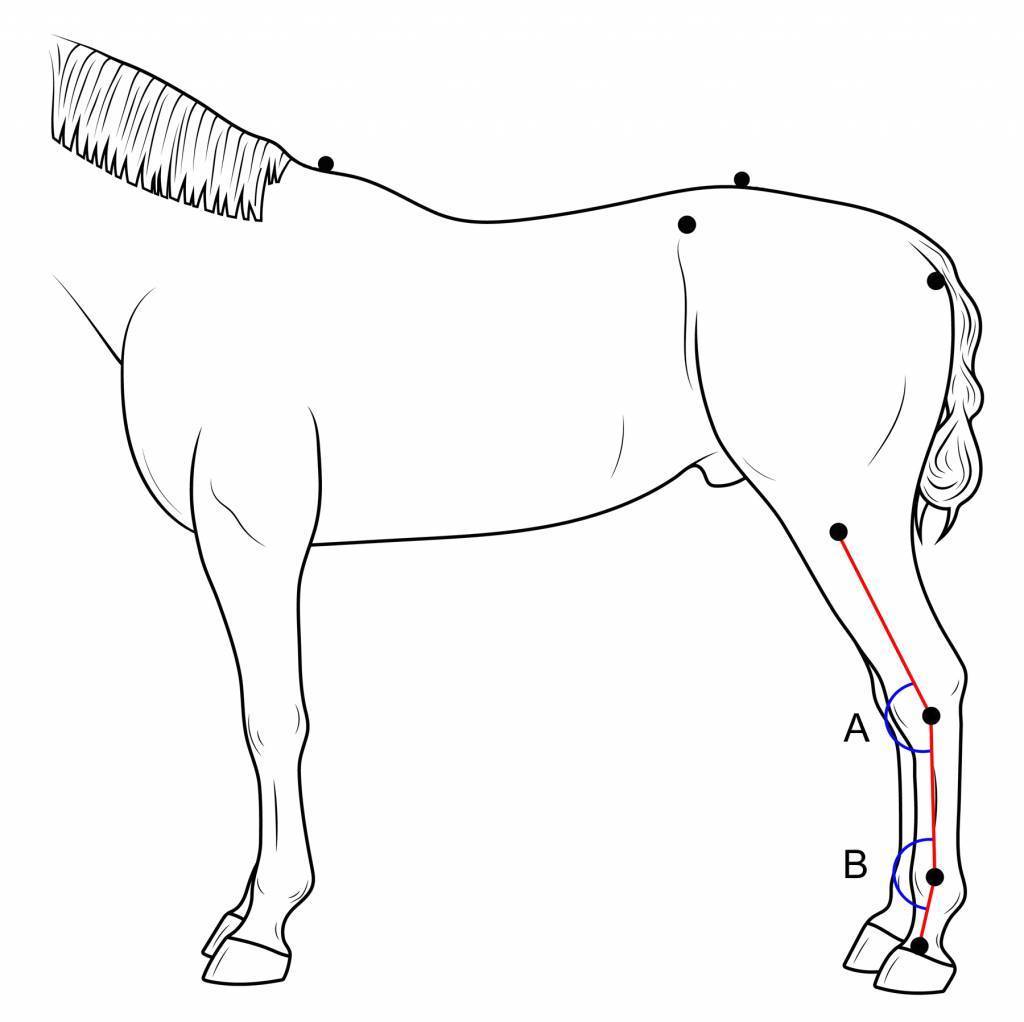Sport Horse Lameness: Hind Limb Conformation, Suspensory Ligament Failure Link

Conformation often dictates a horse’s longevity as an athlete. While some equine athletes can overcome structural deficiencies, others cannot. When it comes to sport horses, hind limbs are often scrutinized for correctness, with special attention given to the angle of the hocks, as straight hocks are thought to predispose a horse to soft tissue injuries.
Inflammation of the proximal aspect of the suspensory ligament, also known as proximal suspensory desmopathy or high suspensory disease, frequently sidelines straight-hocked horses by causing hind limb lameness. Risk factors for this injury are not completely understood. One recent study set out to determine if horses diagnosed with bilateral proximal suspensory desmopathy have straighter hind limbs—both larger tarsal joints angles and smaller metatarsophalangeal joint angles—than control horses.*

The tarsal joint angle is shown as A on the diagram above, and the metatarsophalangeal joint angle as B.
Researchers used 193 horses in this study. Of these, 142 horses had bilateral proximal suspensory desmopathy, and 51 horses served as controls. Signalment information was gathered for each horse: breed, work discipline, weight, height, and age. With regard to breed, 75 Warmbloods, 38 Irish Sport Horses, 14 Thoroughbreds, 13 ponies, 8 half-Warmbloods, 7 cobs, 4 Arabians, 4 drafts, and 30 horses of other or mixed breeding were used in the study. Disciplines included all-purpose riding (71 horses), dressage (68), eventing (27), show-jumping (16), and other (11).
Markers were placed on specific anatomical landmarks for accuracy of measurement: apex of withers; dorsal midline between the points of hip; craniodorsal aspect of each tuber coxae; 3 cm lateral to each tuber ischia; head of the each fibula; the flat lateral aspect of each talus; dorsodistal aspect of the lateral condyle of the third metatarsal; and the mid dorsolateral aspect of the middle phalanx at the eminence of the origin of the collateral ligament of the distal interphalangeal joint. These are noted on the diagram as black dots.
Photographs of the horses were taken from both sides with the subjects standing squarely, with metatarsus (hind cannon bone) perpendicular to the ground and aligned with the tuber ischia marker. Tarsal and metatarsophalangeal angles were measured.
Results indicate that horses with proximal suspensory desmopathy had larger tarsal angles—that is, straighter hind limbs—than controls, though there was no difference in metatarsophalangeal angles between lame and control horses. The proportion of Warmblood-type horses and dressage horses with proximal suspensory desmopathy was greater than those of other breeds or discipline.
While little can be done to change a horse’s conformation, which is predetermined by genetics, much can be managed to ensure a horse has the building blocks for an athletic career, including sound nutrition with appropriate joint supplementation, mindful conditioning and progression of fitness, and proper farriery.
*Routh, J., C. Stang, S. Gilligan, and S. Dyson. 2020. An investigation of the association between hindlimb conformation and suspensory desmopathy in sports horses. Equine Veterinary Education 32(Suppl. 10):183-192.








